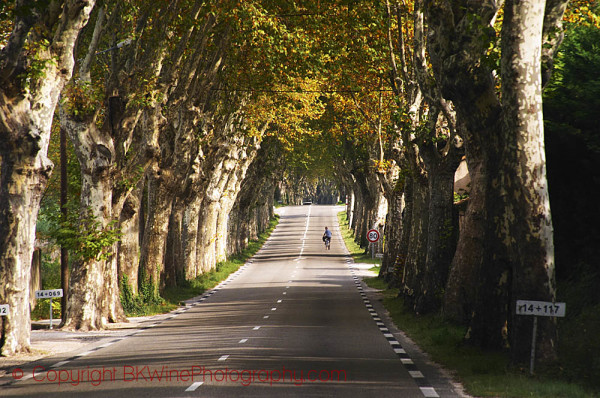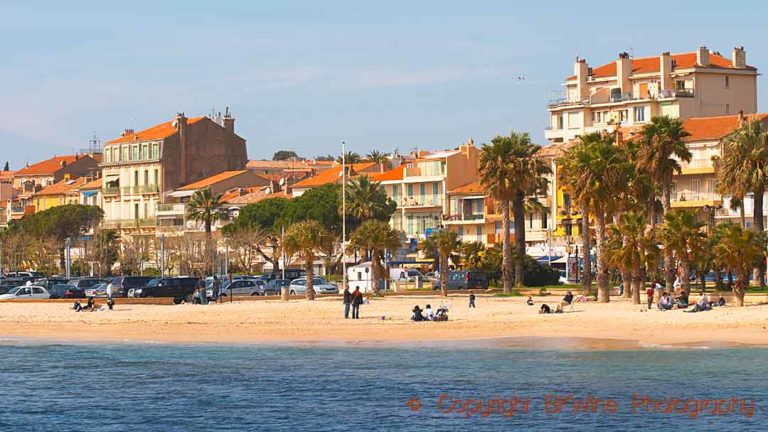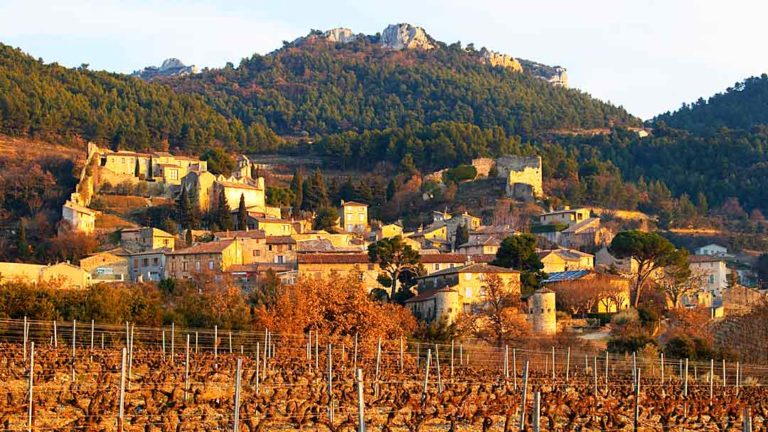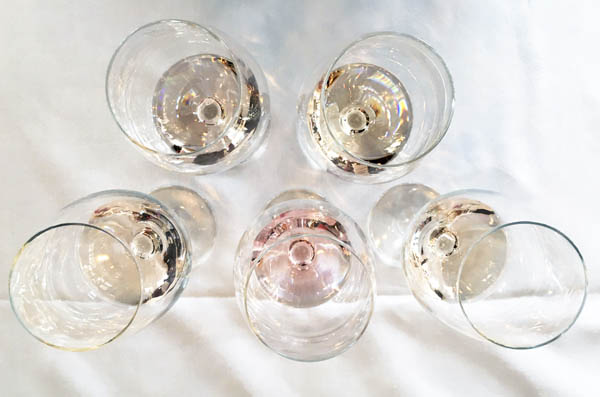A string of Cotes du Rhone-Villages villages
Cotes du Rhone is France’s second largest appellation contrôlée (after AOC / AOP Bordeaux) and spreads its 42,000 hectares on both sides of the river Rhone. Obviously, the quality varies enormously in such a large area and there are also significant price differences. Cheapest are the wines from the numerous cooperatives.
These wines can be decent but it gets more interesting if you move up to the more ambitious independent winemakers who pop up here and there and that really take advantage of the potential of the area. Many of those we find in the departments of Drôme and Vaucluse, east of the river.
The Southern Rhone valley wine country begins from the north around Montelimar, famous for its delicious nougat. We start with Grignan Les Adhémar (formerly Coteaux du Tricastin) that received its own appellation contrôlée already in 1974 but then seems to have lagged a little behind. I have really only one favourite in Grignan Les Adhémar and that’s Domaine de Grangeneuve that makes unpretentious but pleasant wines at low prices.
After Grignan Les Adhémar the appellation changes to Côtes-du-Rhône and Côtes-du-Rhône-Villages. The appellations lie along the river but also extends a few tens of kilomtres to the east, toward the mountains, and it is here that we find the most famous and most beautiful Côtes-du-Rhône-Villages villages Vinsorbres, Séguret, Sablet, Rasteau and others.
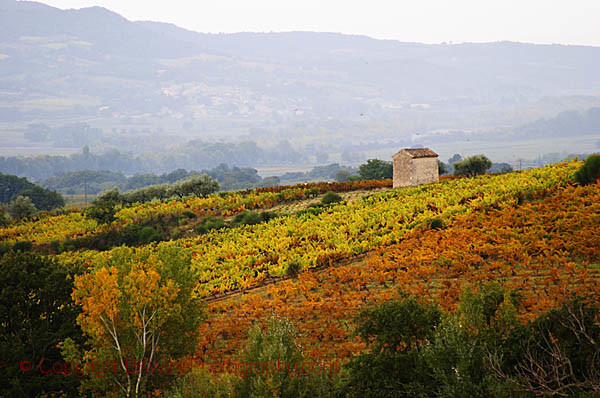
But let’s start our journey at the very north in the Côtes-du-Rhône appellation, in a small village called Montbrison. Here you will find the interesting producer Domaine Gramenon. The owner is named Michèle Laurent and she has 24 hectares of vineyards, including some very old grenache vines. The wines are aromatic and perfumed, not powerful but rather elegant. Michèle wants to work as natural as possible, and uses little or no sulphur. An interesting cuvée that Michèle does is Ceps Centenaires La Mémé, made from grenache vines planted about 120 years ago. In total La Meme is one hectare and it is not only the age of the vines that are exceptional but also the fact that the vines are not grafted on American stocks, ungrafted vines in other words.
From Monbrison it is not far Nyons If you are in the vicinity do not miss tasting the delicious olives from here. Not without reason Nyons is called “the olive capital”. The city is very beautiful, surrounded by thousands of olive trees. It enjoys a warm and fine micro-climate where not only olive trees but also exotic plants and other trees thrive splendidly.
Vinsobres
When we continue we pass the village of Vinsorbres high up on a hill and we stop just after, in Saint-Maurice-sur-Eygues.
Here we find one of the more original wineries in the area, Domaine Viret. Philippe Viret has been here since the early 1990s and has devoted himself to what he calls cosmoculture, a form of organic or biodynamic farming where he draws inspiration from both the Inca and Mayan cultures, and from the ancient Egyptians. The cellar is built like a pyramid and the inside is truly worthy of the name “cave cathedral” as Philippe named it.
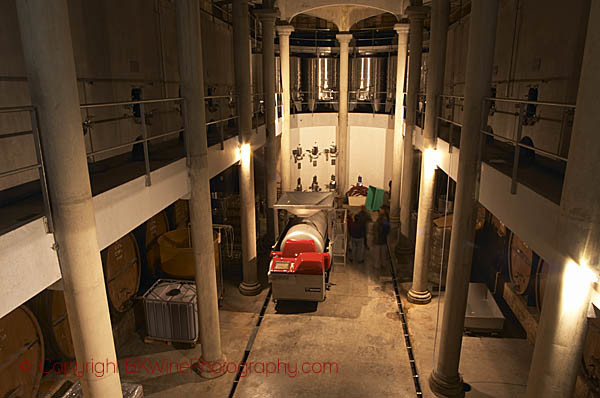
You may think what you want about his philosophy, many have, but the wines are very good and well made. They have names like La Cuvée Solstice, Renaissance, Emergence, La Coudée d’Or and Energie. Often, elegant and spicy with nice fruit and good structure.
Now we are approaching Les Dentelles de Montmirail Mountains with their jagged peaks and here the well-known villages come one after the other. We take the road towards Vaison-la-Romaine to admire the Roman remains and then continue to Rasteau and Cairanne.
Rasteau
Rasteau has its own appellation contrôlée for its red Vin Doux Naturel (fortified wine), and the red table wine is sold as a Cotes-du-Rhone Villages Rasteau. Very expensive for the appellation (around 30 euros) – but obviously not too expensive because they are very hard to come by – are wines from the superstar in Rasteau, Jérôme BRESSY of Domaine Gourt the Mautens.
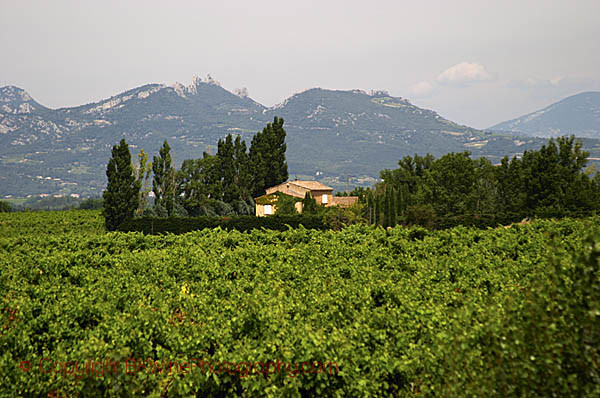
In a more normal price range you can find the wines from André Romero at Domaine La Soumade. His hallmarks are a maximum of ripe grapes, extremely low yields, long cuvaison (maceration) and high fermentation temperature. All this is to get intensely aromatic wines with plenty of tannins. His wines are some of the richest and most concentrated in the southern Rhone Valley.
Cairanne
Many believe that Cairanne will be the next Côtes-du-Rhône-Villages village to become elevated to its own appellation contrôlée. And if you look at all the excellent wineries in the village it looks not unlikely. The best vines are planted on the steep slopes around the village. Among my favourites are the Domaine de l’Oratoire Saint-Martin, where the brothers François and Frédéric Alary makes several great cuvées, not least the oaky and dense prestige cuvée Haut-Coustias with a lot of Mourvèdre and 12 months of aging in barrel.
Another favourite is the Domaine Marcel Richaud that I have written about several times. And also Domaine Denis et Daniel Alary (related to the above-mentioned Alary brothers), Domaine d’Aéria, Domaine des Amadieu and Domaine Rabasse-Charavin.
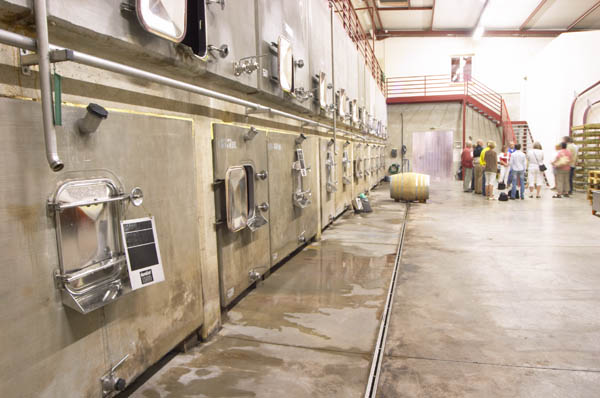
Séguret
A bit further south you have the picturesque medieval town of Séguret which looks out over the vineyards from its hilltop. Do not miss a stroll in the village along the narrow winding streets. Provided you do not come in the middle of the high season you can almost feel transported a few hundred years back in time.
The most famous producer is the Domaine de la Cabasse owned by a Swiss couple, Alfred and Antoinette Haeni since 1990. This sympathetic couple has expanded the wine business to include a hotel and a restaurant. Everything is very beautiful and the food is delicious as are the wines. The white Primevères is a floral Séguret with a little honey notes and the red Les Deux Anges is a balanced, elegant and fruity Sablet. Both wines are very reasonably priced.
A few kilometres away, in Sablet, we find Domaine de Piaugier, a family property on 30 hectares that Jean-Marc Autran took over from his father in 1984. He considers himself as something of a perfectionist and he has done well from the first moment he started both with his red and white wines.
Gigondas
On the border to Gigondas you find the Chateau du Trignon, a 60-hectare estate owned by the Roux family since 1895. The 60 hectares are spread out in both Sablet and in Gigondas, and they also own a vineyard in Châteauneuf-du-Pape. All the wines are good, not least their viognier. They have discovered that this grape thrives very well in the chalky soil found in some parts of the property. The wine, which smells of summer fruit and apricot, is floral and smooth in the mouth but with a good acidity. A good aperitif wine.
Back in 1971 Gigondas was the first villages village that got its own appellation contrôlée. Now the best Gigondas wines compete with Chateauneuf-du-Pape, but at much lower prices.
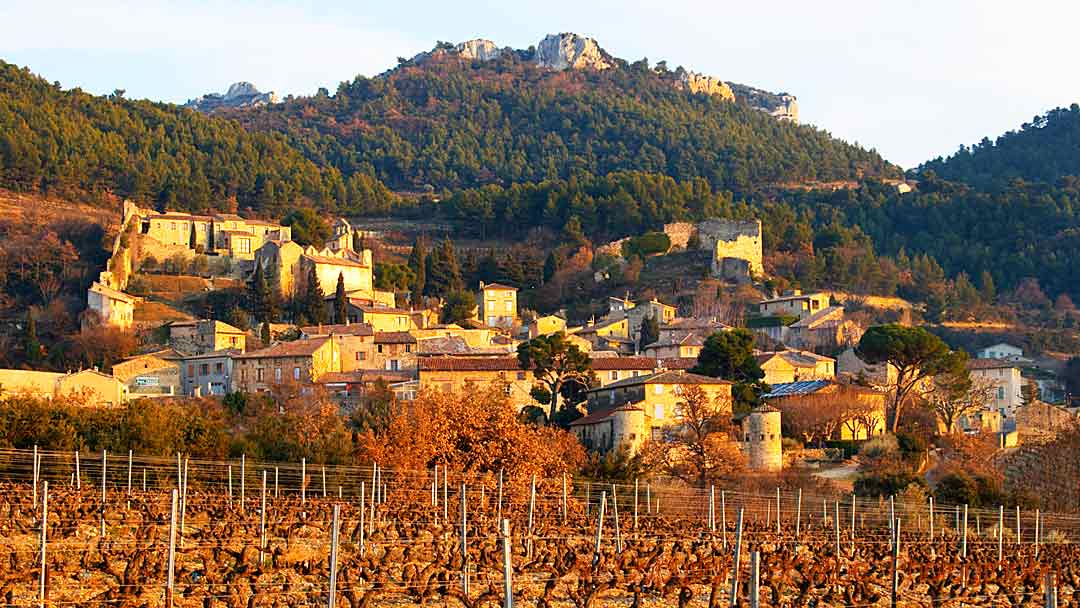
A big and relatively new star in Gigondas is Louis Barroul at Domaine Saint-Cosme. He took over the family estate in 1992 and is a big supporter of the terroir. The main thing with wine, he thinks, is its origin.
Château Raspail Aÿ has long been a classic in Gigondas. The 18 hectare estate is run by Dominique Aÿ with a lot of attention to detail. Grenache is used up to 70% and the wines are slightly rustic, slightly peppery with good fruit and fairly soft tannins. Other estates to notice in Gigondas are Domaine Santa-Duc, Domaine la Bouïssiere and Domaine Les Pallieres.
Vacqueyras
The neighbouring village of Vacqueyras received its AOC in 1989 and among the several excellent growers I can mention for example Philippe Cartoux at Domaine des Espiers and Serge Férigoule at Domaine Le Sang des Cailloux.
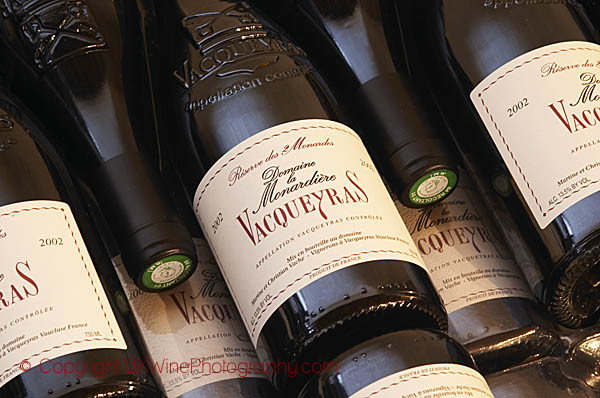
Beaumes de Venise
The southernmost villages village on the eastern side of the Rhone is picturesque Beaumes-de-Venise. One tends to forget that they also make red wines here since they are primarily known for their sweet and aromatic Muscat de Beaumes-de-Venise, a Vin Doux Naturel (fortified wine) made from the Muscat à Petits Grains, which has its own appellation. Look for growers such as Domaine de Coyeux and Domaine de Parme.
Some more Cotes du Rhone-Villages producers to look out for:
- Domaine Saladin
- Vignerons de Caractère (ett bra kooperativ)
- Domaine Montirius, Vacqueyras
- Domaine des Amouriers
- Domaine la Monardière
- Domaine la Réméjeanne
- Vigneron d’Estezargues (ett bra kooperativ)
- Domaine Alary
- Domaine de la Ferme Saint Martin
- Domaine de Piaugier
- Domaine de Trapadis
- Domaine Duseigneur
- Domaine de la Cabotte
- Domaine des Bousquets
There are many, many more!
You can read more on this in our new book on French wines, France the Country of Wine. It has a whole chapter on Rhone wines. Unfortunately it is only available in Swedish until we find an international publisher for it.
[box type=”info” style=”rounded” border=”full”]You will find both exquisite wines and beautiful scenery in the southern Rhone valley. We are after all in Provence, at least partially! Come and taste some of the best wines and the delicious food on a wine tour to the Rhone Valley with BKWine.
Travel to the world’s wine regions with the experts on wine and specialist on wine tours.
“The world’s top wine tours”, Travel + Leisure on BKWine.[/box]
